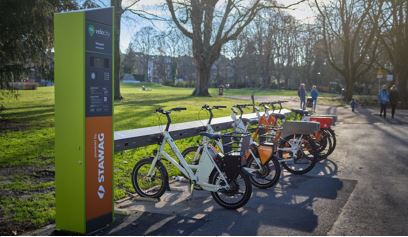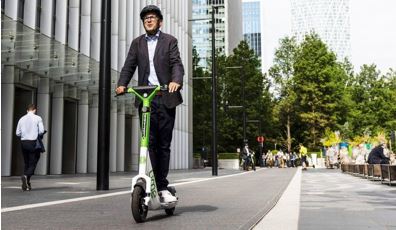Shared micromobility is “the shared use of a bicycle, scooter, or other low-speed mode enabling users to have short-term access to an active or low-speed motorized transportation mode on an as-needed basis” (IGI Global).
In recent years, electrification of vehicles has led to new shared micromobility services (e.g. shared e-bikes, e-scooters, e-skateboards, e-mopeds). Due to their affordability, 24/7 availability and flexibility of routes, they have experienced a rapid growth in uptake, especially among low-income users.

Source: https://www.bbc.com/news/uk-48106617
Shared micromobility can become a cost-efficient solution to challenges such as the reduction of traffic congestion. It can contribute to the transition to more sustainable mobility modes and, if using renewable energy sources, provide a green alternative for urban freight transportation, especially last mile delivery logistics (e.g. e-cargo bike sharing). Other potential benefits include the reduction of private vehicle ownership and therefore lower consumption of resources.
Shared micromobility infrastructure is generally cheaper and easier to build and maintain than road infrastructure, though user safety and the integration with other sustainable mobility services must be ensured. Shared micromobility devices are classical feeders to public transport systems. Integration of shared mobility services into public trnasport networks can be done through the use of smart cards/ transport apps, integrated ticketing systems and multi-modal marketing campaigns.

However, shared micromobility poses some challenges to cities, e.g. the invasion of public space and unregulated parking, vandalism and short lifecycle of devices, emissions from shared vehicle transport for repositioning or recharging, user safety or the use of data generated by shared micromobility. To tackle these challenges, cities might consider to regulate speed limits, parking, technical features, individual protection equipment, minimum age or data exchange. New technology, such as swappable batteries, may help to optimize the logistics of collecting electric vehicles for charging.
Comments ()